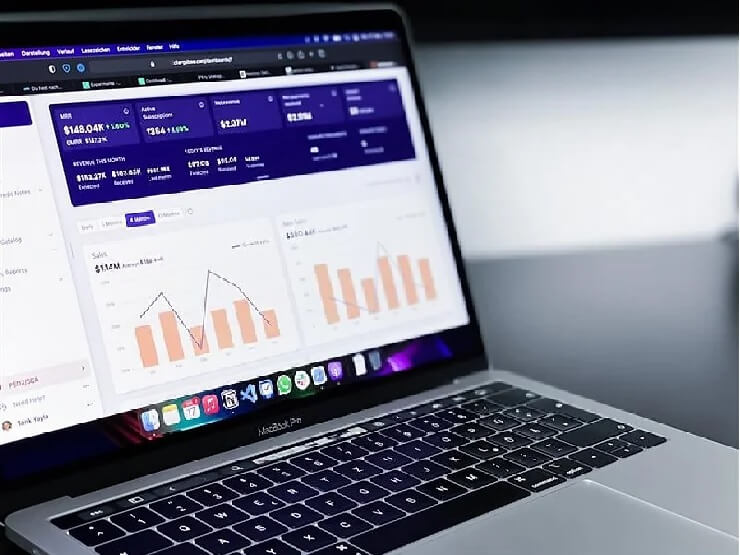It’s a big advantage with digital media – the ability to analyze and respond to metrics tied to media campaigns in real time. But having a pretty analytics dashboard just to check the box doesn’t really add any value. Let’s talk about some ways to get the most out of the data that’s available.
Digital Advertising Dashboards
One of the most exciting aspects of digital advertising is the promise & possibility of instantaneous reporting. Advertising platforms like Google Ads & Meta Ads can reflect basic metrics like impressions, clicks, CTR & more almost as they happen. Similarly, website analytics platforms like Google Analytics show site behavior such sessions & pageviews basically in real time. However, the way advertising agencies choose to disseminate information still varies greatly from agency to agency. At The Ward Group, our clients enjoy live, real-time reporting dashboards that are provided for every compatible digital campaign. One of our main differentiators as an agency is transparency, and reporting dashboards are a great way to demonstrate that. Today we’ll be discussing some dashboarding best practices, and also some things to look out for and avoid where possible.
The Rise of Dashboards
When we think about how far media reporting has come, it’s remarkable to realize there now exists a mechanism to capture campaign performance in real time. Remember, our agency first opened in the 80s, when rabbit ears were high tech and campaign reporting was delivered in the form of post-campaign binders. Yes, physical pieces of paper. Clients had to wait until campaigns were concluded and for their agency to compile all the applicable information and schedule a meeting to go over results. Fast forward to 2022, and clients can simply independently click a link on their computers or phones and view up-to-the-minute reporting from their digital campaigns. Now, the mediums in use still have to be compatible to be included in the dashboard. We can’t run a terrestrial radio campaign or static outdoor buy and have them incorporated into a dashboard. For the most part, when we’re talking about dashboarding, we’re talking about digital campaigns on platforms such as Google Ads & Meta Ads. Still, the practice of client reporting has advanced tenfold with the advent of dashboards, and who’s to say offline mediums won’t get there some day as well? We’re already seeing improvements & advancements in the reporting capabilities in channels like OTT & streaming audio, so in our eyes, the sky is the limit in terms of future potential.
What Dashboards Can Do For Your Marketing Campaigns
Instantaneous reporting means fast & fleet opportunities for optimizations. Notice a keyword garnering lots of impressions but no clicks? Add it to the negative keyword list. Does a particular day of the week drive less conversions than others? Make some daypart adjustments. Optimizations like these are available without the use of dashboards, of course, but the inclusion of dashboards makes it that much easier to notice anomalies & trends and adjust marketing campaigns accordingly.
Look Out for Pitfalls of Dashboards
Although dashboards can greatly enhance clients’ understanding of their marketing spends and help us manage campaigns better, they can also be a burden when abused or used incorrectly. For starters, instant reporting is not the same as instant gratification. In other words, it’s great to see ad performance like clicks & website behavior at a moment’s notice, but it doesn’t mean we can or should expect to always see instant results in the form of conversions. The overall media strategy still needs time to function and drive the desired end result, be it ecommerce purchases, new customer acquisition, leads, or what have you. Just because the reporting is captured on paper faster doesn’t mean the results will come quicker. Patience is still required on that front.
Similarly, dashboards can become troublesome when their users become obsessive in looking at it. We recommend looking at a dashboard only once per day (if even that) to get an idea of performance, and move on until tomorrow. Constantly checking & refreshing the dashboard can, and likely will, affect your mental health and cause us to become too engrained in the nitty gritty of daily performance rather than focusing on the overarching goal of the media campaign.
What Does the Ideal Dashboard Look Like?
Our goal with dashboards is to make them easy to read, so that our clients may look at them and quickly grasp high-level performance without exerting too much brain power. When possible, we like to follow the one-page, five-minute rule, which confines the overall metrics from campaign performance to one single page and allows the dashboard user to walk away with all key insights in under 5 minutes. Anything more is usually better suited for a mid-campaign or post-campaign recap where we will delve into much more detail. Likewise, we want to avoid inundating the dashboard with text wherever possible, which commonly clutters the dashboard and takes away from the key charts & widgets reflecting marketing performance. That being said, our dashboards are ultimately customizable to the client’s needs.
Dashboard It Up with Ward
With the rise of digital advertising platforms like Google & Meta, we have found that dashboards help clients understand performance quicker and provide a tool to help us better optimize campaigns. Gone are the days of complete reliance on manual reporting on a monthly or quarterly cadence. Dashboards can help you take your digital media campaigns to the next level. Are you ready to reach that next level? Contact The Ward Group today!








